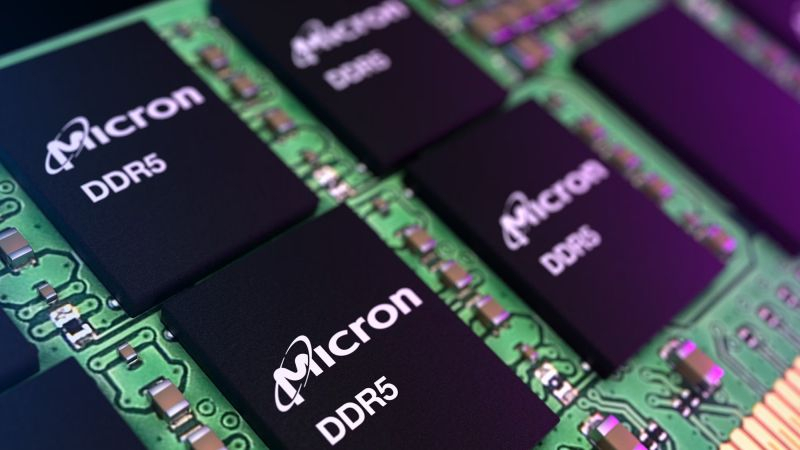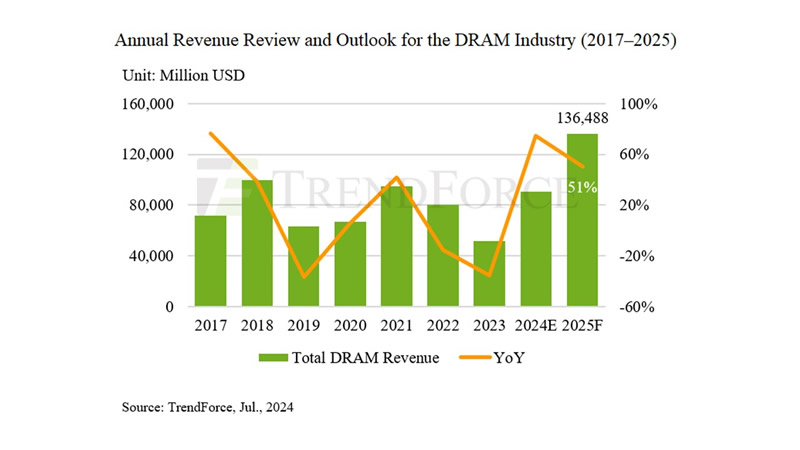According to the latest report from analytics company TrendForce, global revenue from sales of computer memory DRAM and NAND in 2024 will grow by 75% and 77%, respectively. This growth will be driven by several factors, including increased demand and popularity of high-performance HBM memory.

Image source: Micron
In addition, sales in these areas are expected to continue to grow in 2025. At the same time, DRAM will grow by 51%, and NAND by 29%, reaching record levels. Growth will be driven by increased capital expenditures and increased demand for primary upstream raw materials such as silicon wafers and chemicals, while increasing pricing pressure on memory buyers.
Driven by a 53% increase in average DRAM prices in 2024, TrendForce estimates that DRAM sales revenue will reach $90.7 billion in 2024, up 75% year-over-year. Next year, the average price will increase by another 35%, and revenue will reach $136.5 billion, up 51% compared to 2024. HBM is also expected to account for 5% of total DRAM shipments and 20% of revenue in 2024.

Image source: TrendForce
In addition, the popularity of memory types such as DDR5 and LPDDR5/5X will also increase the average price in the market. It is expected that by 2025, DDR5’s share of the server memory market will reach 60-65%, and LPDDR5/5X will occupy 60% of the mobile device market.
In the NAND flash memory segment, growth will be driven by the introduction of 3D QLC, a technology that allows more data to be stored on a single chip. QLC is projected to account for 20% of total NAND shipments in 2024, with this figure expected to increase in 2025. At the same time, the introduction of QLC on smartphones and servers will be a key factor in the growth of this segment.

Image source: TrendForce
The situation will affect both the market and consumers. Record revenue will allow memory manufacturers to increase investment in research and development and expand production. Capex in the DRAM and NAND industry is projected to grow by 25% and 10%, respectively, in 2025.
However, rising memory prices will inevitably lead to higher prices for electronics for end consumers. At the same time, it will be difficult for electronics manufacturers to pass on all costs to buyers, which could lead to a decrease in profits and, possibly, a decrease in demand.